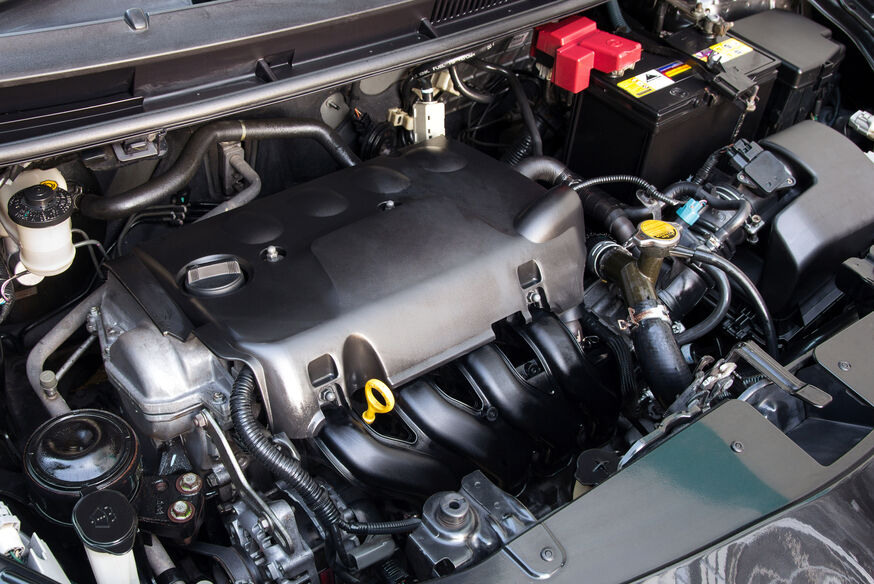Ever left your car parked in the driveway for weeks, maybe even a month, and then turned the key only to hear… nothing? We’ve all been there, scratching our heads and wondering, “Why won’t this thing start?” It’s frustrating, isn’t it? Here’s the deal: even when your car is sitting idle, the battery is still quietly working away, powering little things like the alarm or the clock. That slow drain can sneak up on you and leave your car dead when you least expect it.
So, why does this matter? Well, whether you’re someone who doesn’t drive often or you’re planning a long vacation, a dead battery can throw a wrench in your plans. In this guide, we’re tackling the big question: how long should a car battery last without driving? We’ll give you a straight answer, dig into the factors that affect car battery life, and share some handy tips to keep it going strong. Let’s get started!
How Long Does a Car Battery Last Without Driving?
So, how long should a car battery last without driving? On average, you’re looking at about 2 to 4 weeks. But hold on—it’s not that cut-and-dry. Your battery isn’t just chilling out when the car’s off; it’s dealing with something called parasitic drain. What’s that, you ask? It’s the sneaky way electronics like your car alarm, GPS, or even the radio memory sip power, bit by bit, even when the engine’s silent.
Here’s where it gets interesting: a brand-new battery might hang on for up to 2 months without a problem. Pretty impressive, right? But if your battery’s been around the block—say, 3 to 5 years old—it might give up in just a few days. According to AAA, a typical car battery can lose about 5% of its charge per day when idle due to this drain. That’s why it’s not a one-size-fits-all answer. Curious about what makes the difference? Let’s break down the factors that decide your battery’s fate.
Factors That Affect Car Battery Life When Idle
Your car battery’s lifespan when it’s sitting idle depends on a handful of things. Let’s dive into each one so you can figure out what’s going on with yours.
Battery Age
Ever noticed how things slow down as they get older? Batteries are no different. A battery that’s 3 to 5 years old—the average lifespan, according to the Battery Council International—loses its charge faster than a fresh one. If yours is pushing that age, it might not last as long sitting idle.
Battery Type
Not all batteries are built the same. You’ve got your standard lead-acid batteries, which are common and affordable, and then there’s AGM (Absorbent Glass Mat) batteries, which are a step up. AGM batteries hold their charge longer when idle—sometimes weeks more than lead-acid ones. In my opinion, if you don’t drive often, splashing out on an AGM might be worth it.
Temperature
Weather’s a big player here. Cold snaps—like those brutal winter mornings—slow down the chemical reactions inside the battery, making it harder to crank the engine. But don’t think heat’s your friend either: extreme temperatures above 85°F can speed up self-discharge, draining your battery faster. A study from the University of Michigan found that high heat can cut battery life by up to 20%. Crazy, right?
Parasitic Drain
This one’s the silent killer. Even when your car’s off, stuff like these can nibble away at your battery:
- Car alarm: Keeps your ride safe but uses power.
- GPS system: Tracks your car, even when you’re not in it.
- Radio memory: Remembers your favorite stations.
- Clock: Yep, even that tiny thing draws juice.
Some cars have higher parasitic drain than others—luxury models with fancy tech can zap power faster. Ever wondered why your battery died so quick? This might be why.
Battery Condition
If your battery’s been through the wringer, it’s not going to perform like it used to. Things like sulfation (a buildup of crystals inside) or corrosion on the terminals can sap its strength. I’ve seen batteries with crusty terminals struggle after just a week of sitting. Keeping it clean and healthy makes a huge difference.
Signs Your Battery Is Draining Too Fast
So, how do you know if your battery’s on its last legs? Keep an eye out for these red flags—trust me, catching them early can save you a headache.
- Dim headlights or interior lights: If they’re flickering or not as bright, your battery’s probably low.
- Slow engine crank or clicking sound: Turn the key and hear a sluggish groan or a click? That’s your battery crying for help.
- Dashboard warning lights: See that little battery icon light up? Don’t ignore it—it’s trying to tell you something.
Before you leave your car sitting for a while, check for these signs. A quick peek could keep you from coming back to a dead ride. Experts at Consumer Reports say testing your battery every 6 months is a smart move—why risk it?
Bonus: Tips to Extend Your Battery Life
Want to stretch out your car battery life when you’re not driving? Here are some tricks I swear by:
- Disconnect the battery: Going away for a month? Pop the hood and unplug the negative terminal. No parasitic drain, no problem.
- Use a battery maintainer: These nifty gadgets keep your battery charged without overdoing it. Perfect for cars that sit a lot.
- Park in a garage: Shielding your car from wild temperature swings can add weeks to your battery’s idle time.
- Check it regularly: A little TLC—like cleaning corrosion or testing the charge—goes a long way.
How to Extend Car Battery Life Without Driving
So, your car’s going to be parked for a while—maybe weeks, maybe months. How do you keep that battery alive? Don’t worry; I’ve got you covered with some easy, practical tricks. Here’s how to stretch out your battery’s life when the engine’s off.
Disconnect the Battery
Planning to leave your car sitting for months—like a long trip or a seasonal break? Disconnecting the battery is your best friend. It’s like hitting the “pause” button on all those sneaky power drains from stuff like the alarm or dashboard clock. No drain, no dead battery. Simple, right?
Mini-Guide: How to Disconnect Your Battery Safely
Never done it before? No sweat—here’s a quick rundown:
- Turn off the car and yank the keys out. Safety first!
- Pop the hood (or check the trunk—some cars hide batteries there).
- Find the negative terminal—it’s usually black or marked with a “–”. Loosen the nut with a wrench and pull the cable off.
- Now the positive terminal—red or with a “+”. Do the same.
- Tuck the cables away so they don’t accidentally touch the posts.
When you’re back, just reconnect in reverse: positive first, then negative. Boom—your battery’s ready to roll.
Use a Trickle Charger
Ever heard of a trickle charger? It’s this nifty little gadget that keeps your battery topped up without overdoing it. Think of it as a slow drip of energy—enough to maintain the charge, but not so much that it fries the system. I swear by it for my old Jeep that only sees action in the summer. Plug it in, hook it to the battery, and let it work its magic. Perfect for anyone who doesn’t drive often or has a car that’s more decoration than transportation.
Limit Parasitic Drain
“Parasitic drain” sounds like something out of a sci-fi movie, doesn’t it? It’s just a fancy way of saying all the little things that sip power when your car’s off—think car alarms, radio memory, even that tiny clock. Before you leave your car sitting:
- Switch off all lights—headlights, dome lights, you name it.
- Unplug gadgets—phone chargers, GPS units, dash cams.
It’s like double-checking you locked the door before a trip. Small moves, big payoff.
Park Smart
Where you park can make or break your battery. Extreme temperatures are the enemy—cold slows down the battery’s chemical reactions, while heat makes it discharge faster. A study from the University of Michigan found that scorching heat can cut battery life by 20%. Yikes! If you’ve got a garage or carport, use it. No garage? Even a shady spot beats baking in the sun or freezing in the snow.
Regular Maintenance
A little love goes a long way. Before you let your car sit:
- Clean the terminals—that white, crusty buildup (corrosion) can zap power. Scrub it off with baking soda and water.
- Check the charge—use a voltmeter or charger to make sure it’s full.
It’s like brushing your teeth before bed—basic upkeep that saves you trouble later. According to the Battery Council International, the average car battery lasts 3 to 5 years, but good habits like these can push it to the max.
What Happens If a Car Battery Dies From Sitting Too Long?

Okay, let’s say you didn’t do any of the above, and now your battery’s toast. What’s going on inside that thing? And can you bring it back from the dead?
When a battery sits too long, sulfation happens. It’s a chemical buildup—lead sulfate crystals—forming on the battery plates. Imagine tiny roadblocks piling up, making it harder for the battery to hold a charge. If it’s just been a few weeks, a charger might blast those crystals away and revive it. But if it’s been months—or the battery’s old (say, 4+ years)—the damage might be permanent.
Can you save it? Sometimes, yeah—a good charger can work wonders. But if it’s too far gone, you’re looking at a replacement. Expect to pay $100 to $200, depending on your car and battery type, says Consumer Reports. Not fun, but better than being stranded. Want to know more, visit our website….
Frequently Asked Questions (FAQ)
Got questions buzzing around your head? Let’s tackle the big ones about car batteries and idle time.
- Q: How long can a brand-new car battery last without driving?
A fresh-off-the-lot battery can last up to 2 months if the parasitic drain is low. But if your car’s loaded with electronics, it might poop out sooner.
- Q: Does starting the car periodically help?
Totally! But here’s the deal: you’ve got to run it for 15-20 minutes to recharge fully. A quick 2-minute start? That’s like eating a single chip and calling it lunch—not enough.
- Q: Can a dead battery be recharged?
Often, yes—if it’s not ancient or super damaged, a charger can bring it back. But if it’s been dead for ages, it might be a lost cause.
- Q: How often should I check my battery if I don’t drive?
Every 2-3 weeks is smart. Pop the hood, test the charge, and sleep easy knowing you won’t get stuck.
Practical Tips for Real-Life Scenarios
Life throws curveballs—vacations, seasonal toys, or just driving less these days. Here’s how to keep your battery happy in any situation.
Vacation Mode
Off for a few weeks? We’ve all been there, dreaming of sandy beaches while the car collects dust. Try this:
- Hook up a trickle charger to keep it juiced.
- Ask a buddy to start it weekly and let it run for 15-20 minutes.
It’s like having a plant-sitter, but for your car.
Seasonal Vehicles
Got a summer hot rod or a winter camper? When it’s out of season:
- Disconnect the battery—no drain, no worries.
- Store it somewhere cool and dry—think garage or shed.
I do this with my motorcycle every winter, and it fires up like a champ come spring.
Pandemic or Remote Work
Driving less since the world went remote? You’re not alone. Keep your battery in check by:
- Testing it monthly—a voltmeter or a short drive works.
- Using a trickle charger if you’re barely rolling.
It’s frustrating, isn’t it? Car sitting there, barely used—but a little attention keeps it ready.
Conclusion
So, how long should a car battery last without driving? Typically, 2 to 4 weeks, but it’s a gamble—age, battery type, and weather can shrink that window fast. The average lifespan’s 3 to 5 years, per the Battery Council International, but why risk it? Test your battery today—don’t get stranded tomorrow! Got a killer battery tip of your own? Drop it in the comments—I’d love to hear how you keep your ride alive.







One Response